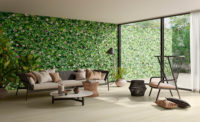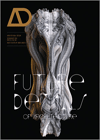Techniques for conveying the experience of architecture are more sophisticated. Can they supplant the act of visiting a building?
With all the available means to see buildings — through printed publications and images on the web, tablet (iPad, Android), or even better, videos, it may seem as if you don’t need to actually visit a building to know what it’s about. At the same time that electronic media enhance the visual experience, of course, digital advances allow more complicated buildings to be constructed. Architects such as Zaha Hadid, Steven Holl, and UNStudio, to name a few, have been enabled by certain clients and circumstances to experiment frequently with ceiling, wall, and floor planes that tilt, volumes that rotate, and spaces that swell and shrink dramatically. Architectonic results that engage a variety of senses — the kinesthetic, the haptic, as well as the optical — have always existed in architecture. But the new crop of buildings makes a strong argument why it’s essential now, more than ever, to visit the site.


Obviously, experiencing architecture firsthand is best. Nevertheless, since architectural record started publishing in 1891, it has tried to come as close as possible to being there, through words and photos in print, and now also on the web and with video. And not only photographers and videographers visit the buildings. Record’s writers and editors also need to see the work of architecture in person to better convey through words what it is like to be in and move through its spaces over a period of time. We go there not to conduct a functional checkup — just as important — but because spaces worth living in and looking at go beyond function.
The actual experience isn’t easy to approximate, since it involves a kinesthetic perception, where your muscles in your feet and legs send messages about perceiving space to your brain, and where your haptic sense allows you to mentally measure yourself in relation to objects, as if you were touching them. Needless to say, they both enhance the optical sense data forming your visual perception of the built work.
That said, today the recreation of the actual experience is much closer to the real thing than it was when Record first started. In its early years, the magazine’s critics, such as Montgomery Schuyler and Russell Sturgis, wrote about buildings as visual experiences, and, more often than not, as if looking at two-dimensional compositions, like paintings on a wall. Schuyler, for example, critiqued New York’s Bayard Building by Louis Sullivan (1899) seemingly standing across the street, gazing at the front of the 13-story high-rise embedded in the middle of a crosstown block.
As architecture began to radically change, and buildings grew to astonishing heights, Schuyler’s point of view changed as well. It was no longer so fixed. In the early 20th century, skyscrapers looming over the rest of the city could be seen from all sides. In writing about New York’s 57-story Woolworth Building by Cass Gilbert (1913) for Record, Schuyler analyzed it from afar, mid-distance, and even close-up. The critic argued that the Gothic-style ornament of the balconies projecting into space provided a sense of human scale in relation to the overall size of the tower. The photographs by Tebbs-Hymans published alongside Schuyler’s story captured the three-dimensional quality of the work. They illustrate how printing techniques constantly improve the representation of architecture: In fact, Record’s first editor in chief, a young poet, Henry W. Desmond, brought innovations in photographic reproduction to our publication.
Writing, in addition to photos and video, clearly helps tell the story. Although the spatial experience of architecture is hardly new, theorizing about it didn’t get underway until the Modern era, particularly in 19th-century Germany. The ideas on empathy of Robert Vischer, spatial perception of August Schmarsow, and later the phenomenology of Edmund Husserl offer a few salient examples of this orientation. Did any of these theorists, particularly the earlier ones, influence Record’s critics way back when? Hard to know. But ideas could have been in the air. Already architects, such as Frank Lloyd Wright, were emphasizing spatial concepts in buildings and essays. (Wright began writing for Record in 1908.)
By the early 20th century, building technology was making possible a more expressive form of architecture that brought together the connection between building and theory: Erich Mendelsohn’s Einstein Tower in Potsdam (1921) may not have used reinforced concrete, but its swirling forms held the promise of a spatial potential we could later find in the concrete of Frank Lloyd Wright’s Solomon R. Guggenheim Museum in New York (1959), or Eero Saarinen’s TWA Terminal at JFK (1962), both blatantly kinesthetic, haptic, and visual architectural experiences.
The computer has certainly allowed that process of design and construction to go further, as have the improved techniques for making glass, steel, concrete, and plastic. The structural glass balconies at the Ledge at Skydeck at Chicago’s Willis Tower by Skidmore, Owings & Merrill offer a modern-day counterpoint to the Woolworth Tower balconies, enabling visitors to survey the city in a more immersive (or vertiginous) way. Hadid’s Guangzhou Opera House in China provides an example of today’s experiments in shifting and tilting planes and volumes. Record still seeks to represent that feeling of being in these environments by all the means at its disposal. It can’t be a substitute for being there. But in a global age, it’s a worthwhile supplement.




Post a comment to this article
Report Abusive Comment